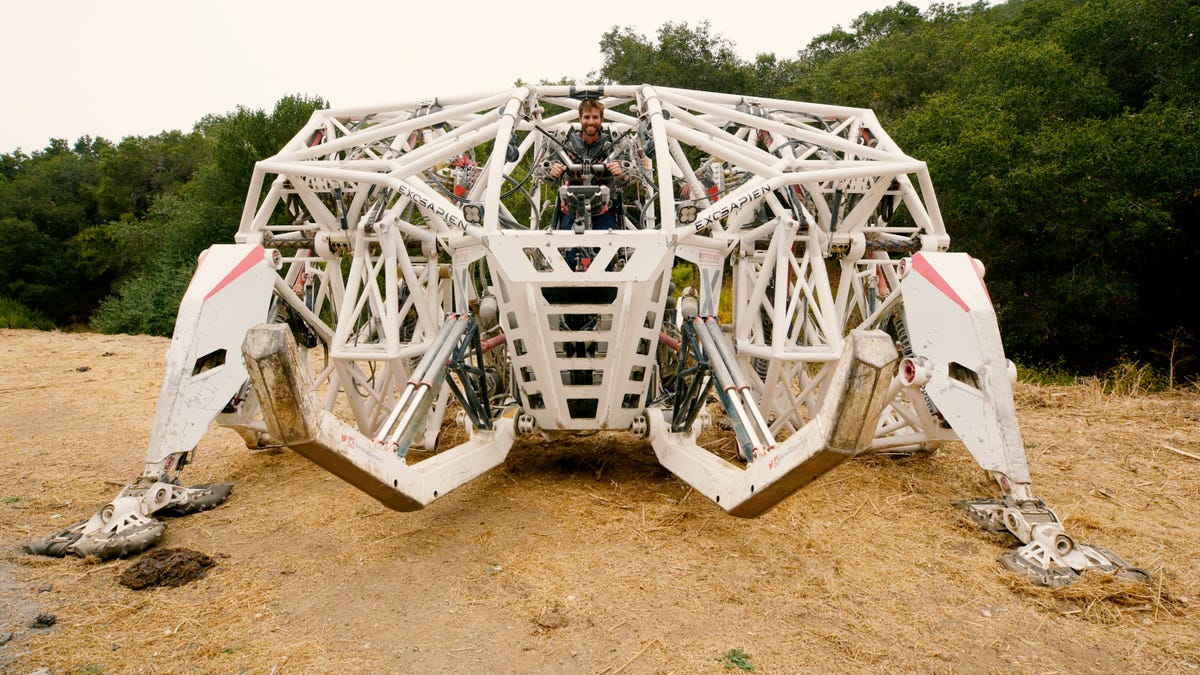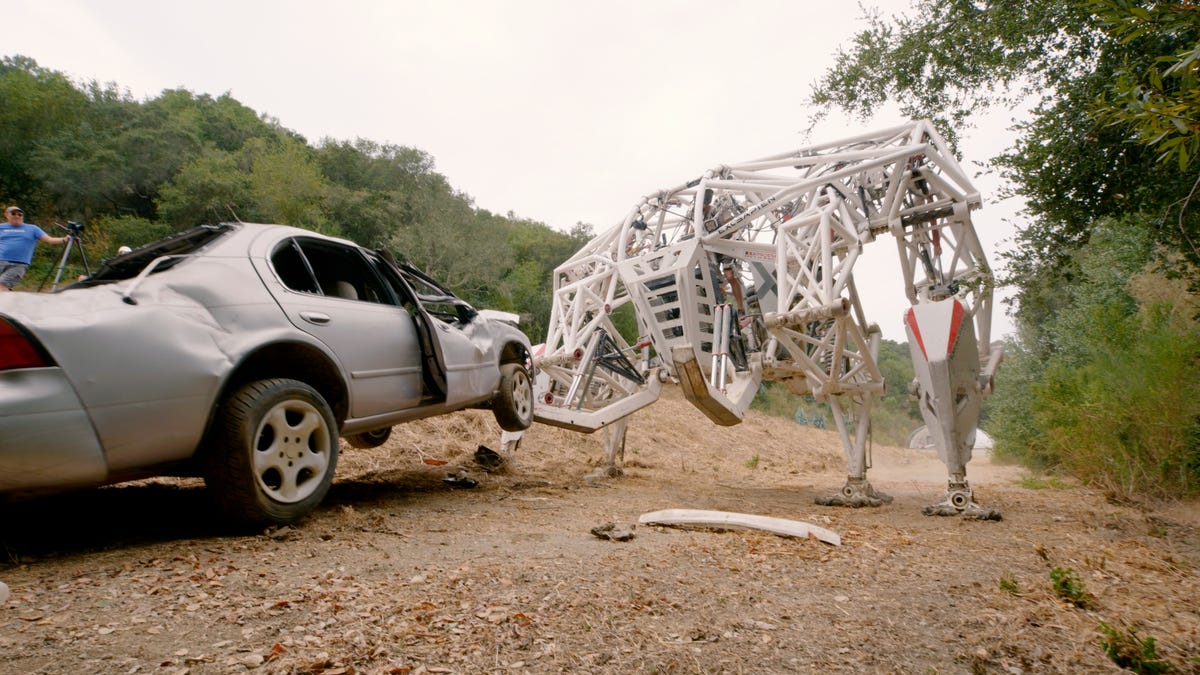I can barely move a muscle. My feet, tied into cycling shoes, are locked behind me. My hands are clenched around metal grips, while my chest is pressed against a padded support bar.
“Go ahead and press Cowboy,” my instructor Jonathan says.
I release one hand from its grip and reach out to tap “Cowboy Mode” on the tablet that’s suspended a few feet from my face. With the sound of motors whirring to life, everything starts vibrating.
“The mech is yours.” Jonathan shouts.

Prosthesis is an 18-foot-tall quadruped.
John Kim/CNETThe mech is an 18-foot-tall, 9,000-pound human-driven exosuit called Prosthesis. It can scale hills, cross rivers and flip cars. Jonathan is Jonathan Tippett, the co-founder of Exosapien Technologies. He spent more than a decade designing and building Prosthesis and is the self-described world’s leading mech pilot.
“I wanted to make a machine that captured that age-old pursuit of human skill and mastery but combined it with supermodern technology, and in a novel way that was not automated.”
We’re at a ranch that belongs to a friend of Jonathan’s east of San Francisco, where he’s agreed to give me a crash course in piloting Prosthesis.


Prosthesis can use its front bumpers to flip a car.
John Kim/CNETI ask him what makes a good mech suit pilot. “People with good body awareness. Gymnasts, snowboarders, mountain bikers.” he says. “Having good rhythm. If you’re a good dancer or you play a musical instrument, that seems to help because there’s a rhythmic element to the kinematics of the machine.”
Pilots control Prosthesis’ four identical limbs with their own human limbs. Their arms operate the two outside legs, and their real legs operate the two mechanical legs on the inside. It sounds pretty simple. Spoiler alert: It isn’t. In fact, almost no one manages to take an actual stop on day one. Watch the video above to see my experience.
Though anyone can book a training session with Prosthesis (lessons start at $1,500 for 90 minutes), Jonathan envisions mech suit piloting as a competitive sport with pilots racing obstacle courses and solving puzzles. “Picture American Ninja Warrior meets monster trucks,” he says.
